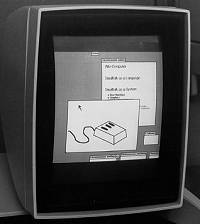博文
2009图灵奖信息简编
|||

2009年度图灵奖公布(科学网)
以下信息来自:http://www.acm.org/press-room/news-releases/2010/turing-award-09
ACM Turing Award Goes to Creator of First Modern Personal ComputerThacker, Founding Member of Three Major Research Labs, Linked to Tablet PC and Other Major Innovations in Computing
NEW YORK, March 9, 2010 – ACM, the Association for Computing Machinery today named Charles P. Thacker the winner of the 2009 ACM A.M. Turing Award http://awards.acm.org/2010/turing-award.cfm for his pioneering design and realization of the Alto, the first modern personal computer, and the prototype for networked personal computers. Thacker’s design, which he built while at Xerox PARC (Palo Alto Research Center), reflected a new vision of a self-sufficient, networked computer on every desk, equipped with innovations that are standard in today’s models. Thacker was also cited for his contributions to the Ethernet local area network, which enables multiple computers to communicate and share resources, as well as the first multiprocessor workstation, and the prototype for today’s most used tablet PC, with its capabilities for direct user interaction. The Turing Award, widely considered the “Nobel Prize in Computing,” is named for the British mathematician Alan M. Turing. The award carries a $250,000 prize, with financial support provided by Intel Corporation and Google Inc.
“Charles Thacker’s contributions have earned him a reputation as one of the most distinguished computer systems engineers in the history of the field,” said ACM President Professor Dame Wendy Hall. “His enduring achievements—from his initial innovations on the PC to his leadership in hardware development of the multiprocessor workstation to his role in developing the tablet PC—have profoundly affected the course of modern computing.”
Andrew Chien, Vice President of Intel Labs and Director of Future Technologies Research at Intel Corporation said, “Charles Thacker’s design of the Alto computer embodied the key elements of today’s personal computers, and is at the root one of the world’s most innovative industries that empowers individuals around the world. We applaud Chuck’s clarity of insight, focus on simplicity, and his incredible track record of designing landmark systems that have accelerated the progress of both research and industry for decades.”
“Google is pleased to join in honoring Charles Thacker for his far-reaching role in the birth of one of the most important technologies in the 20th century,” said Alfred Spector, Vice President of Research and Special Initiatives at Google Inc. “His contributions made possible the style of computing that we enjoy today, and we are proud to be a sponsor of the ACM Turing Award to encourage continued research in computer science, and the related technologies that depend on its continued advancement.”
Influencing the Course of Computer History
Thacker created and collaborated on what would become the fundamental building blocks of the PC business. The Alto computer, developed in 1974, incorporated bitmap (TV-like) displays which enable modern graphical user interfaces (GUIs), including What You See Is What You Get (WYSIWYG) editors. These components have dominated computing during the last two decades. Thacker was the co-inventor of the Ethernet local area network, introduced in 1973, the “interconnection fabric” that allows multiple digital devices such as workstations, printers, scanners, file servers, and modems to communicate with each other. Today’s Ethernets, which are thousands of times faster than the original version, have become the dominant local area networking technology.
At Digital Equipment Corporation’s System Research Center, Thacker designed the Firefly multiprocessor workstation, an innovation that has new relevance in the current multicore world. These systems are widely used across many domains for their ability to improve productivity and create performance advantages, with applications for embedded architecture, network systems, digital signal processing, graphics, and special effects.
Thacker went on to Microsoft Research in 1997 to help establish its Microsoft Research Cambridge laboratory, where he also oversaw the design of the first prototypes on which most of today’s tablet PCs are based. Described as the most significant recent advance in the PC hardware platform, they enable faster, more powerful operations and they offer fundamentally new capabilities for direct interaction with users that are fast becoming part of the mainstream of computing. After joining the Tablet PC team to help shepherd the product to market, he returned to Microsoft Research in 2005, and is currently engaged in computer architecture research at Microsoft’s Silicon Valley campus.
Background
Thacker has published extensively and holds 29 patents in computer systems and networking. He is a Distinguished Alumnus of the Computer Science Department of the University of California Berkeley, where he earned a B.S. in physics. He holds an honorary doctorate from the Swiss Federal Institute of Technology (ETH) and is a Fellow of ACM and the Computer History Museum. He is also a member of the American Academy of Arts and Sciences and the U.S. National Academy of Engineering.
For the development of Alto, Thacker (with Butler Lampson and Robert Taylor) received the 1984 ACM Software System Award. In 2004, (with Lampson, Taylor, and Alan Kay) he was awarded the Charles Stark Draper prize for the development of the first networked personal computers. In 2007, he was the recipient of IEEE’s John von Neumann medal.
ACM will present the 2009 A.M. Turing Award at its Awards Banquet on June 26, in San Francisco, CA.

November 2008
Chuck Thacker was fortunate to enter computing at a time when the fundamental electronic technologies had matured to the point that many of the predictions of the field’s pioneers could finally be achieved. Educated in Physics at the University of California at Berkeley, he joined the university's project Genie in 1968. This project had constructed one of the most successful early timesharing computers, the SDS 940, and was planning a follow-on system when he joined the project.
The project became the Berkeley Computer Corporation, which developed the BCC 500 timesharing system. Here, he led the group designing the system’s central memory and microprocessor. Although not a commercial success, BCC supplied the core group of technologists for the newly-formed Computer Science Laboratory at the Xerox Palo Alto Research Center (PARC), which he joined in 1970.
During his thirteen years at PARC, Chuck led the hardware development of most of the innovative systems that were developed at CSL. He was the project leader of the MAXC timesharing system, a PDP-10-equivalent that was one of the first systems to make use of semiconductor memory. He was the chief designer of the Alto, the first personal computer to use a bit-mapped display and mouse to provide a windowed user interface. He is a co-inventor of the Ethernet local area network, and contributed to many other projects, including the first laser printer and the Dorado, a high-performance ECL-technology personal workstation. He also designed and implemented the SIL CAD system, which was used by most PARC hardware designers throughout the '70s. In the early '80s, he was architect of the Dragon, a multiprocessor system that employed the first "snooping" cache.
In 1983, Chuck was a founder of the Digital Equipment Corporation's Systems Research Center. Here he led the hardware development of the Firefly, the first multiprocessor workstation, and the Alpha Demonstration Unit, the first Alpha-architecture multiprocessor.
Chuck has also worked extensively in computer networking. He led the development of AN1, a local area network that used active switches and 100 Megabit-per-second point-to-point links to provide high aggregate performance. The follow-on project, AN2, also developed by his team, became the DEC Gigaswitch/ATM product.
He joined Microsoft in 1997 to help establish the Company's Cambridge, England laboratory. After returning to the U.S. in 1999, he joined the newly-formed Tablet PC group and managed the design of the first prototypes of this new device. He then worked on a project to make computing more pervasive and effective in K-12 education. He is currently setting up a group at Microsoft Research in Silicon Valley to do computer architecture research.
Chuck has published extensively, and holds a number of U.S. patents in computer systems and networking. In 1984, he was awarded (with B. Lampson and R. Taylor) the ACM's Software Systems Award for the development of the Alto. He is a Distinguished Alumnus of the Computer Science Department of the University of California, and holds an Honorary Doctorate from the Swiss Federal Institute of Technology (ETH). He is a member of the IEEE, a fellow of the ACM, a member of the American Academy of Arts and Sciences, and a member of the National Academy of Engineering, which awarded him (with Butler Lampson, Alan Kay, and Robert Taylor) the 2004 Charles Stark Draper prize for the developed of the first networked personal computers. In 2007 he was awarded the John Von Neumann medal by the IEEE.
Wikipedia信息
以下信息来自:http://www.thegatesnotes.com/Thinking/article.aspx?ID=118PC Pioneer Chuck Thacker Wins Turing Award
Posted 03/09/2010
For his lifetime contributions to computer science, the Association for Computing Machinery has honored Chuck Thacker with its prestigious Turing Award. Over four decades, Thacker’s work at Xerox PARC and Microsoft have helped pave the way for the modern personal computer.
There are few people I can think of who have made as important a contribution to computer science as Chuck Thacker. That’s why I was so happy to hear that he was recognized with the Turing Award by the Association for Computing Machinery.
The Turing Award is often referred to as the “Nobel Prize of computing.” It is given annually to individuals for contributions “of lasting and major importance to the computer field,” and is accompanied by a $250,000 prize. It's a big deal.
Chuck was the chief designer of the Alto, the first personal computer to use a bit-mapped display and mouse to provide a windowed user interface. He co-invented the Ethernet local area network, and contributed to many other breakthroughs, including the first laser printer.
A quarter century later, Chuck played a pivotal role at Microsoft in the development of the Tablet PC. We’re seeing today how breakthroughs in direct user interaction are making a difference in mainstream computing.
Today, Chuck is a Technical Fellow at Microsoft Research Silicon Valley. He holds a number of U.S. patents in computer systems and networking, and in 2007, was awarded the prestigious John Von Neumann medal for his role in the creation of the PC and the development of networked computer systems.
The Turing Award really underscores the importance of Chuck’s contribution to computing. Today, it’s easy to take the PC for granted, but Chuck truly was an inspired visionary who understood its possibilities and potential.
https://blog.sciencenet.cn/blog-89075-301994.html
上一篇:盖茨论道网址
下一篇:哲学、工程、技术论谈(fPET-2010)

